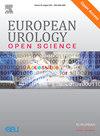Intrarenal Pressure Monitoring During Ureteroscopy: A Delphi Panel Consensus
IF 3.2
3区 医学
Q1 UROLOGY & NEPHROLOGY
引用次数: 0
Abstract
Background and objective
Elevated intrarenal pressure (IRP) may increase the risk of complications in patients undergoing ureteroscopy. As there is limited clarity on a threshold value for high IRP, how to manage high IRP, or which patients are at greater risk of complications due to high IRP, we used the Delphi methodology to understand expert opinion in this area.
Methods
The Delphi process comprised two online surveys and an in-person meeting. During the in-person meeting, areas of disagreement and consensus were explored. Consensus statements were developed and voted on to determine the level of consensus. The study was granted a waiver by HML IRB Research and Ethics (reference number 2193).
Key findings and limitations
The pan-European panel started with 12 and ended with 11 experienced endourologists. Eleven consensus statements were developed. The statements cover topics such as the definition of high IRP, complications linked to high IRP, and patient risk factors for these complications. After anonymous voting, consensus was achieved for all the statements. Two had a strong level and nine had a moderate level of agreement. There was no consensus on an IRP threshold, although the majority would be concerned for patient safety at a pressure above 61–80 cm H2O.
Conclusions and clinical implications
Any IRP above normal physiological levels should be considered high. High IRP during ureteroscopy is a concern for patient safety. It is important to understand links between high IRP, patient characteristics, and complications. We call for additional research to better understand these risks and to inform refinements to clinical practice.
Patient summary
A group of experts were asked their opinion on pressure within the kidney (intrarenal pressure, IRP) during a procedure called ureteroscopy (URS), when a narrow telescope is passed through the bladder and into the tube connected to the kidney. Statements that the panel agreed on were developed. These statements show that there is a concern about high IRP during URS as it may be linked to a higher risk of complications for the patient. More research is needed to better understand high IRP and its link to patient outcomes.
输尿管镜下肾内压监测:德尔菲小组共识
背景与目的肾内压升高可能增加输尿管镜检查患者发生并发症的风险。由于高IRP的阈值,如何管理高IRP,以及哪些患者因高IRP而面临更大的并发症风险,我们使用德尔菲方法来了解这一领域的专家意见。方法德尔菲过程包括两次在线调查和一次面对面会议。在面对面的会谈中,双方探讨了存在分歧和共识的领域。制定共识声明并进行表决,以确定共识的程度。该研究获得了html IRB研究与伦理(参考编号2193)的豁免。主要发现和局限性泛欧洲小组由12名开始,11名经验丰富的腔内专家结束。制定了11项协商一致声明。这些陈述涵盖了诸如高IRP的定义、与高IRP相关的并发症以及这些并发症的患者危险因素等主题。经过不记名投票,所有发言达成一致。2人有强烈认同,9人有中等认同。对于IRP阈值没有达成共识,尽管大多数人会关注患者在高于61-80 cm H2O的压力下的安全。结论及临床意义任何高于正常生理水平的IRP均应考虑为高。输尿管镜检查时的高IRP是患者安全的一个问题。了解高IRP、患者特征和并发症之间的联系是很重要的。我们呼吁进行更多的研究,以更好地了解这些风险,并为临床实践提供改进信息。在输尿管镜检查(URS)过程中,一组专家被问及他们对肾内压力(肾内压力,IRP)的看法。输尿管镜检查是通过一个狭窄的望远镜穿过膀胱,进入连接肾脏的管子。制定了小组商定的声明。这些陈述表明,泌尿道尿路手术期间的高IRP值得关注,因为它可能与患者并发症的高风险有关。需要更多的研究来更好地了解高IRP及其与患者预后的联系。
本文章由计算机程序翻译,如有差异,请以英文原文为准。
求助全文
约1分钟内获得全文
求助全文
来源期刊

European Urology Open Science
UROLOGY & NEPHROLOGY-
CiteScore
3.40
自引率
4.00%
发文量
1183
审稿时长
49 days
 求助内容:
求助内容: 应助结果提醒方式:
应助结果提醒方式:


